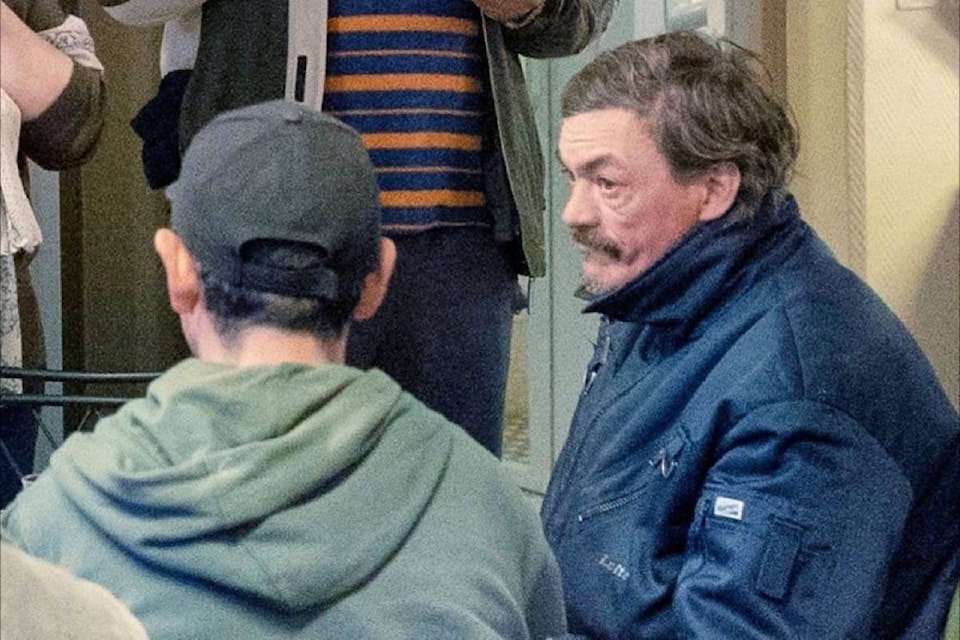A few weeks ago, a man who is sleeping rough at the banks of the Coquihalla River came to me with a story.
Andrew Michael Wallace told me how a group of teenagers had thrown big rocks at his tent on three occasions around Nov. 12. In his account, the teens had also sharpened a log and thrown it at his tent.
He says the same teenagers, up to three boys around 14-15 years old, have since been following, ‘stalking’, him around Hope.
“It’s pretty lousy actually,” he said. “It’s just lousy and it hurts me.”
At the time I added it to my long list of stories to be worked on, and in the ensuing weeks, it never made it to the top of the list.
Then, a teenager was charged in relation to a murder halfway across the world. Sometime between Aug. 7 and 8 a 14- and 16-year-old in a small town in southern Sweden, Huskvarna (population 21,500), allegedly beat a homeless man to death. According to police, they used their own hands and instruments including a road sign, a traffic cone, lifebouys and rocks: they continued beating the man after he had lost consciousness. The boys later uploaded parts of the beating they filmed to social media application Snapchat.
Forty-eight-year-old Gheorghe Hortolemei-Lupu, known as ‘Gica’, had immigrated to Sweden a few years ago after losing his job in his home country, Romania. According to police Gica had plans to return home in November, this never came to pass as he was found dead Aug. 8. According to local media, Gica’s cause of death was internal bleeding.
This was not the first time the boys had met Gica. They had harassed him on previous occasions, calling him names.
While the crime in Sweden is extraordinary for the level of violence enacted upon Gica, assaults on people who sleep rough are not uncommon. A few recent examples:
Oct. 13 — a homeless man and a good Samaritan who tried to stop his assault at a Winnipeg bus stop were both badly beaten.
Oct. 30 — A Snapchat video uploaded by a 17-year-old shows fireworks being launched from a car at people on Chilliwack streets, with the caption ‘make ‘em dance’.
Nov 21 — an attack on Mikey, a homeless man in Vancouver’s West End, lands him in hospital.
RELATED: Video of fireworks being thrown at homeless people sparks RCMP probe
A 2007 Street Health Report found 35 per cent of people surveyed on Toronto’s streets had been physically assaulted within the past year. The perpetrators ranged from strangers to acquaintances, police, shelter residents, partners or spouses and shelter staff.
A 2014 Statistics Canada report found people who had been homeless at some point in their lives reported a victimization rate five times higher than those who hadn’t. Sweden is also not the only country where homeless people are murdered — Canada has equally gruesome examples of homeless people dying by being set on fire or beaten to death.
To be clear, there are always two or more sides to every story and I have yet to hear from the Hope teenagers. What has been confirmed by Staff Sgt. Karol Rehdner is this: on Nov. 12 police were contacted by a man who said he had been ‘verbally accosted and had rocks thrown at his tent by an unknown person’.
Then the story muddies a bit. Rehdner confirmed an altercation happened Nov. 14 between two groups of people, what resulted was one allegation of assault. This is believed to be related to the rock throwing incident. An investigation into this continues.
The two alleged crimes — murder in Huskvarna and rock throwing in Hope — are not tied by any real threads, except that in each case the alleged perpetrators seemed to have made a judgment on how human their victims are. And it’s a judgment we make as a society, every day.
A local organization, the Hope and Area Transition Society, is inviting us to examine our values and judgments around substance abuse and addiction in a free series of talks. The third and fourth of these take place Jan. 10 and 24 at the Blue Moose, starting at 6 p.m.
RELATED: HATS invites Hope residents to talk about addiction in the midst of opioid overdose crisis
Taking a good hard look at how we view vulnerable people in our society and sharing this with our children and youth is not only necessary, it could be life-saving.
Emelie is the editor of The Hope Standard, in the mountain town of Hope, B.C. Get in touch with her at news@hopestandard.com.
Is there more to this story?
news@hopestandard.com
Like us on Facebook and follow us on Twitter
